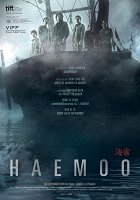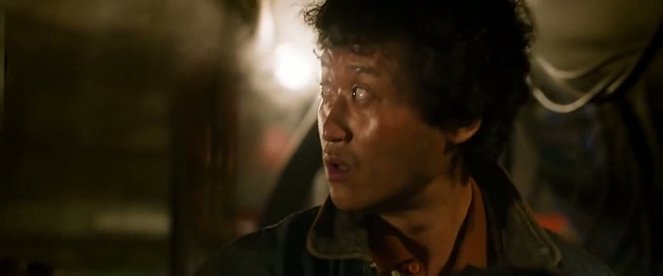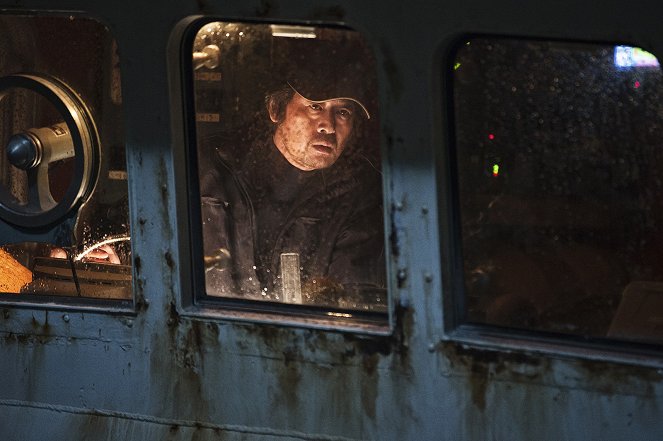Ohjaus:
Sung-bo ShimKuvaus:
Kyung-pyo HongNäyttelijät:
Yun-seok Kim, Micky Yoochun, Ye-ri Han, Sang-ho Kim, Seung-mok Yoo, Hui-jun Lee, Seong-geun Moon, In-gi Jung, Gwi-hwa Choi, Han-joon Kim, Ju-bong Gi (lisää)Juonikuvaukset(1)
Sea Fog is one of the Korean wave's most potent stories and a visually arresting action-packed effort. Telling of an illegal immigrant operation in South Korea, focused on bringing 30 mainland Chinese star-watchers to the hustle and bustle of Busan and Seoul, which ends in terrifying tragedy. (88 Films)
Videot (6)
Arvostelut (2)
Screenwriter Sim Seong-bo was present at the inception of one of South Korea’s most essential and best films, director Bong Joon-ho’s breakthrough and, for many, groundbreaking Memories of Murder. After a decade when his filmography was surprisingly quite empty, he returned thanks to the production backing of Bong, not only with a new screenplay, but also as the director. The filmmaker’s signature is evident in the inventive evocation of the period in which the plot is set. As in Memories of Murder, the story takes place through the paradoxes and absurdities of the time – in this case, in the broadest range of details, as well as in the literally conveyed contradiction that the South Korean fishermen, who are burdened by the social and existential problems arising from the international financial crisis at the turn of the millennium, have resorted out of necessity to smuggling illegal immigrants, who in turn are going to South Korea in the hope of higher wages and providing for their families at home. Though Sea Fog exhibits a number of parallels with Bong’s Snowpiercer, the two films remain fundamentally different and highly distinctive. Both take place in an enclosed space (a boat and a train, respectively) that is encompassed by the elements and where socially motivated drama and mutiny play out. Whereas Snowpiercer presents an allegory in which the protagonists see all levels of the social status quo and aim to overturn or even dismantle the hierarchical pyramid, Sea Fog is a realistic drama in which the social system and capitalism place a burden directly on the characters, but they cannot in any way resist the pressure from the position that they are in. The formalistic execution also corresponds to this, as Bong’s film is characterised by movement in a straight line represented by a train, while Sim’s drama takes place in a single space, or rather it revolves in a spiral of three interconnected stages – a bright and warm engine room, a grey deck exposed to the elements and a darkly sinister fish-refrigeration room. On these various stages, the brilliant screenplay lays out a mentally and emotionally intense drama in which morality comes into conflict with fear over the existential future and, later, simple survival. The great opening depiction of the characters foretells that this is not going to be a genre clash of good and evil or ideals and egoism, but rather a portrayal of ordinary people who find themselves in an extreme situation. That situation is so extraordinarily extreme that one of the ways to escape from it is madness, which comes not in response to some darkness of the human spirit or absolute evil, but in opposition to actions carried out with absolute rationality in the face of existential concerns about the consequences of the given situation for the fishermen’s own lives. Therefore, the film’s climax, which would seem contrived elsewhere, several times literally rejects a simple and unambiguous conclusion with some kind of happy ending, because that is simply not possible, as the events experienced and, mainly, the knowledge of human nature will always resonate in the survivors. And the same applies to viewers and their experience of the film.
()
(vähemmän)
(lisää)
Another beautiful example of how well South Koreans can make good films. This is simply enjoyable to watch, even though the theme is very dramatic and tragic. It's almost a shame for the unnecessary, especially the musical pathos at the end, which tries to create emotions in the viewer at all costs, but otherwise, it is a very good spectacle that can touch you.
()


